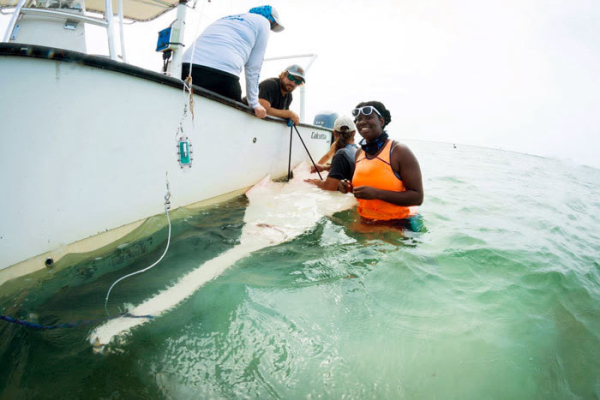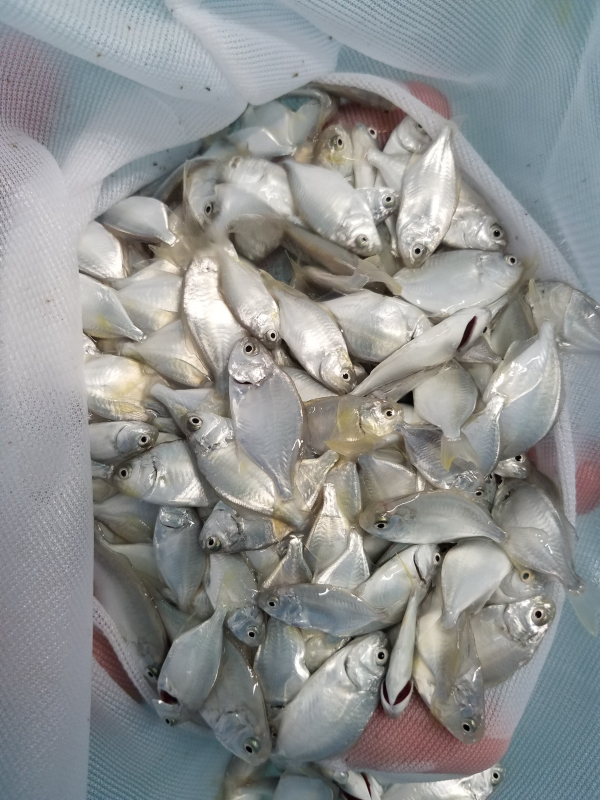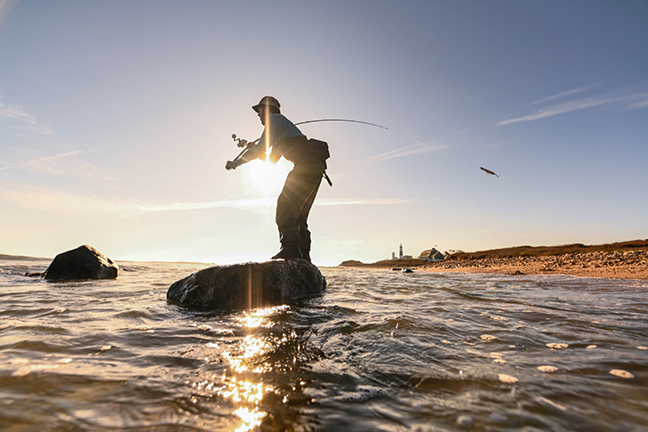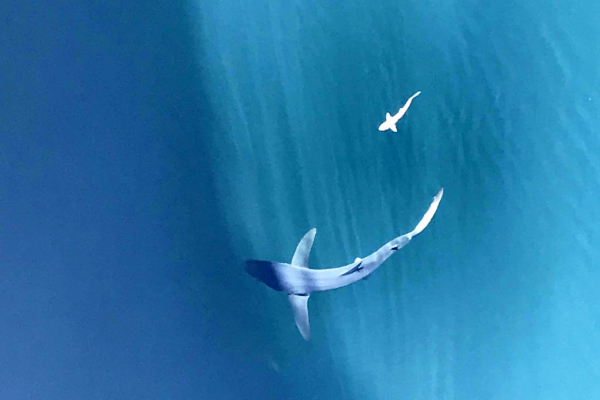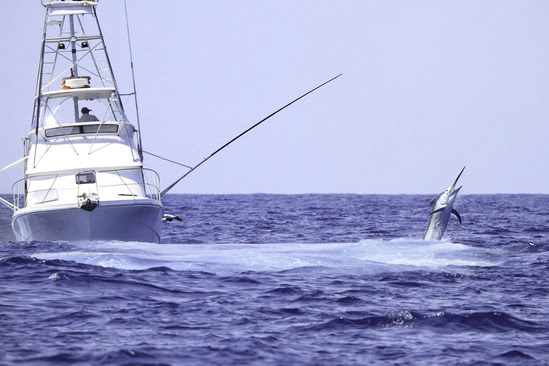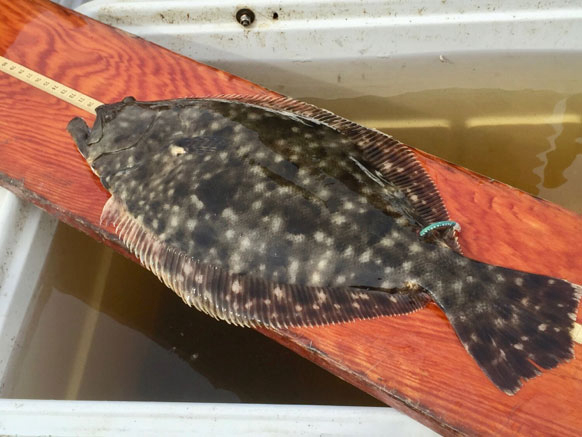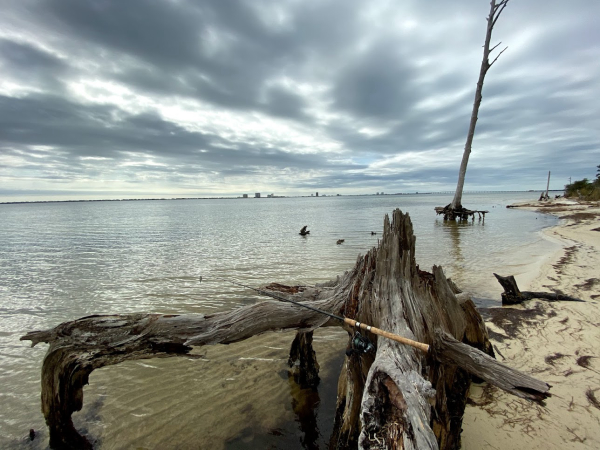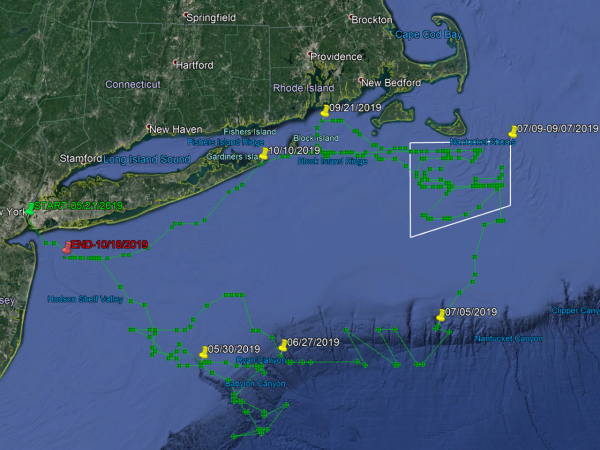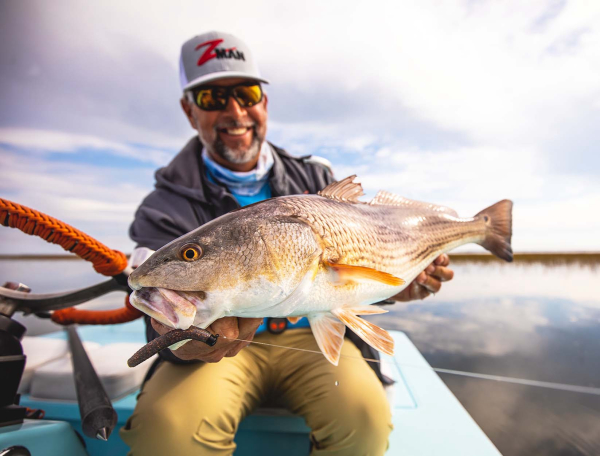
The Salty Ned Rig, with Captain C.A. Richardson |
| Captain C.A. Richardson believes the ‘Salty Ned’ shines during the toughest conditions. Ladson, SC “We call it the ‘Salty Ned,’” quips exceptional inshore guide, Captain C.A. Richardson. “A lot of days, it’s even better than livebait.” In recent years, as Richardson and other intelligent inshore anglers recognized the parallels between freshwater bass tactics and those for redfish, seatrout and other saltwater species, a fresh approach began to emerge. “We followed the evolution of freshwater finesse techniques and the rise of the Ned Rig for smallmouth and largemouth bass,” says Richardson, the brains behind Flats Class TV and University. “It made perfect sense that similar methods and baits could excel in saltwater for a lot of reasons.” While cold-fronts, heavy fishing pressure and other adverse factors often make bass tough to catch, these same dynamics can have a multiplier impact on saltwater species. “From the first day we experimented with a Ned Rig under cold, bluebird skies our results spoke volumes. Three little baits—a 2-3/4-inch Finesse TRD™, TRD TicklerZ™ or TRD CrawZ™— on a 1/10-ounce Finesse ShroomZ™ jighead are all you really need to continue catching fish when conditions turn tough. With water temps in the high 50s and low 60s, we start fishing a Salty Ned around December 1 in Florida and catch fish with it all the way through the first half of March.” Richardson, who today focuses much of his redfish, trout and snook efforts on the fertile though popular waters between Tampa to Fort Myers, believes a Salty Ned easily outfishes previous-era finesse baits like a 3-inch stingray grub or a small bucktail jig. On some days even a live, juicy shrimp or strip of cutbait can’t equal the appeal of a soft, buoyant ElaZtech® bait on a small jighead. “Even for a novice or someone accustomed to using shrimp on a jighead, it’s an easy-to-fish bait that also eliminates pinfish and other nuisance biters. Admittedly, you’ll often catch smaller reds, trout and flounder, but you certainly won’t lack action.“The buoyant nature of ElaZtech and the mushroom-shaped jighead make the bait pivot and float tail-up off the bottom when you stop your retrieve,” says Richardson. “These baits are the perfect match for so many of the small creatures eaten by inshore predators—marine worms, shrimp and other invertebrates as well as sea horses. The upright posture of a TRD on a jighead shows fish a lively morsel that moves with the slightest underwater current—even when you’re not moving your rod at all.” A Z-Man Ned rig remains affixed to Captain Greg Peralta’s inshore rods at least eighty-percent of the time, all year long.Like its freshwater counterpart, fishing the saltwater Ned Rig is all about keeping the bait close to the bottom, letting its buoyancy and soft, active composition do the heavy lifting. “We might fish the Ned a little more aggressively in saltwater,” notes Richardson. “The best presentation I’ve found is to let the bait sink to bottom and then shake the rodtip to make it quiver. Give the jig a 6- to 12-inch pull, pause and then reel slack and repeat. You’re making the back of the bait quiver; when you stop, the bait pivots and goes tail-up. With a bait like the TRD TicklerZ or TRD CrawZ, you’ve also got little appendages that undulate subtly in the current. The bait never really stops working for you.”Even while fishing high-pressure zones like Tampa Bay, Richardson says the Salty Ned remains a non-threatening presentation to which fish react positively. “What’s also cool is you can sight fish for really spooky reds up on clear shallow flats because the bait touches down with such a small, compact signature.” To fish the Salty Ned on featureless flats, in depressions on flats and bends in creeks with deep holes, Richardson rigs one of the aforementioned Z-Man TRD baits on a 1/10-ounce Finesse ShroomZ jighead. He spools with 6-pound test braid and a 50-inch leader of 15-pound Seaguar fluorocarbon. Wielding a medium-light to light action 7-foot spinning rod, he can cast a light jig close to 30 yards. For fishing around heavy cover or docks, Richardson switches to abrasion resistant monofilament line and a Pro ShroomZ™ Weedless jighead.The TRD TicklerZ quivers subtly, even at rest. Summer Catches “Although we primarily finesse-rig in the winter, I’d argue with my guide buddies that even in the warmer months, when spooky, pressured fish won’t hit a faster-moving reaction bait, I can still get bit with a Salty Ned,” Richardson offers.It’s a notion shared by Charleston, South Carolina based Captain Greg Peralta, a now-retired guide who still fishes almost every day of the season. “Several years ago, we started fishing a Finesse TRD with a 1/5- or 1/6-ounce NedlockZ™ jighead and found it to be a super productive coldwater and post-coldfront bait. But when it got warm, we kept fishing the Ned Rig to see when they’d stop biting it. They never did.” These days, Peralta says he fishes the Salty Ned about eighty-percent of the time. Particularly when the water gets warm, Peralta prefers a slightly more aggressive retrieve to entice a reaction. Keeping his rodtip low, Peralta gives the bait a hard snap, followed by a pause. He describes the cadence as similar to working a jerkbait.Z-Man Trick ShotZ on a NedlockZ HD jighead. “Snap and give slack,” he explains. “The lure will pitch or roll left or right, showing fish alternating flashes of dark and light. Color becomes a critical factor because flash is a key indicator of something alive—dark on top, light on the bottom. It’s why I choose colors like The Deal in clear water. As clarity fades, I go brighter with patterns like Hot Snakes—still has that dark-to-light transition, but with a louder chartreuse belly. ”Peralta notes that the length of the pause between snaps depends on conditions. “Colder water, coldfronts and when the barometer is switching from low to high, I go with a longer pause. Because fish typically strike after the snap, when the bait is descending, I like using high-vis 8-pound braid. You don’t always feel the bite on the rodtip; you’re watching your line for a pop or a sudden acceleration. “I can’t say the TRD looks like anything they eat. The action you give it just instinctively makes fish react to and bite it. But it’s so versatile, durable and buoyant you can fish it almost anywhere. I can even throw it on top of an oyster bed or other gnarly areas in a foot of water. The bait’s buoyancy largely keeps it out of trouble. But it also works for fish hunkered down in 15-foot holes. Catches all three of species—redfish, trout and flounder— with regularity; what we call a Lowcountry Slam.”Texas angler Chris Bush fooled a rare 30-inch seatrout with a Finesse TRD on a NedlockZ jighead. The Speckled Truth Even while redfish and snook garner much of the spotlight, select anglers like Chris Bush place the highest esteem on seatrout of trophy proportions. This past September, Bush, who authors a blog called the Speckled Truth, caught a monster 30-inch trout from Upper Laguna Madre, Texas. Stuck in the fish’s jaw was the bait Bush describes as possessing “magic appeal.” A PB&J or The Deal-pattern TRD rigged on a 1/10-ounce NedlockZ, says Bush, has proven itself when the water’s warm and seatrout aren’t responding to traditional presentations. “A Ned Rig has been really effective when other baits aren’t—when there’s so many baitfish in the water that trout aren’t looking for huge meals, but for selective opportunities. Same deal under heavy fishing pressure. The fish are just chilling, feeding opportunistically for short windows. That’s when it’s so effective to put a little TRD down there and sort of invade their personal space. “I give the bait one or two hard twitches and let it fall back to bottom. I try to maintain contact with it at all times, because these big, sluggish trout don’t thump the bait aggressively. Rather, they sort of sit on it, and all you feel is a sudden weight on the line, almost like you’re hung on the bottom.Bush adds that the smallest 3.5-inch Trick ShotZ™ rigged on the same jighead, at times, yields equally productive results as the TRD. “Fished on light tackle in the most grueling situations, these little bitty baits just seem to have a magic appeal for really big trout.” About Z-Man Fishing Products: A dynamic Charleston, South Carolina based company, Z-Man Fishing Products has melded leading edge fishing tackle with technology for nearly three decades. Z-Man has long been among the industry’s largest suppliers of silicone skirt material used in jigs, spinnerbaits and other lures. Creator of the Original ChatterBait®, Z-Man is also the renowned innovators of 10X Tough ElaZtech softbaits, fast becoming the most coveted baits in fresh- and saltwater. Z-Man is one of the fastest-growing lure brands worldwide. About ElaZtech®: Z-Man’s proprietary ElaZtech material is remarkably soft, pliable, and 10X tougher than traditional soft plastics. ElaZtech resists nicks, cuts, and tears better than other softbaits and boasts one of the highest fish-per-bait ratings in the industry, resulting in anglers not having to waste time searching for a new bait when the fish are biting. This unique material is naturally buoyant, creating a more visible, lifelike, and attractive target to gamefish. Unlike most other soft plastic baits, ElaZtech contains no PVC, plastisol or phthalates, and is non-toxic. |
